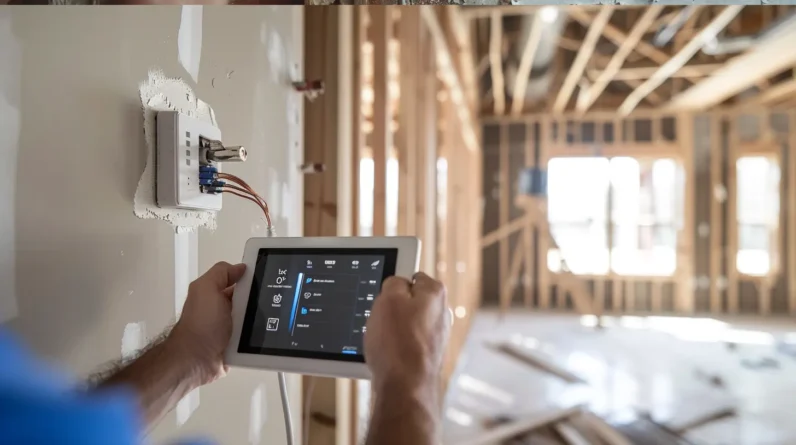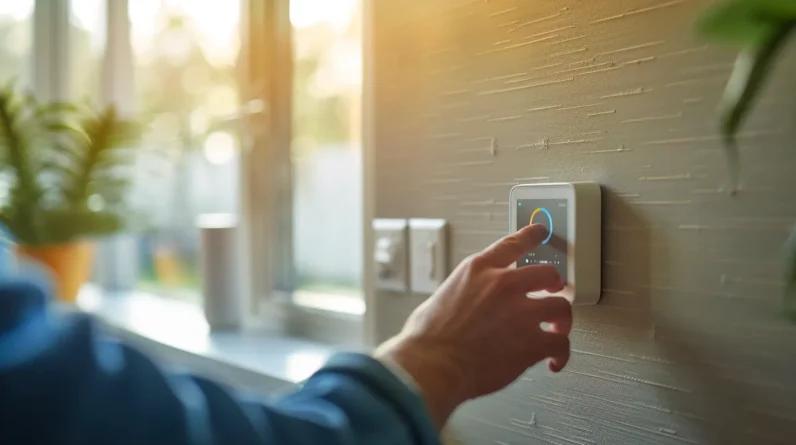
The emergence of smart gadgets has paved the way for a new era of automation. These intelligent devices, seamlessly integrated into our daily lives, have the power to transform our homes, workplaces, and even our modes of transportation.
With their ability to enhance efficiency and improve convenience, smart gadgets are changing the way we live, work, and interact.
This article explores the rise of automation and the profound impact it has on shaping our lives.
Key Takeaways
– Smart gadgets, such as smart thermostats and lighting systems, are transforming our homes by automating tasks, enhancing convenience, and creating a more comfortable and efficient living environment.
– Automation in the workplace is crucial for improving productivity, as it allows for the streamlining of processes, the reduction of manual tasks, and the facilitation of effective teamwork and information flow.
– The transportation industry is being revolutionized by automation, with autonomous vehicles and smart traffic management systems improving road safety, reducing congestion, and optimizing traffic flow.
– Smart gadgets have a significant impact on everyday life, with applications in healthcare, education, and personal wellness. They enable patient monitoring, personalized recommendations, flexible learning, and empower individuals to take control of their health.
The Evolution of Smart Homes
In the realm of home automation, the evolution of smart homes has led to an unprecedented level of convenience and efficiency, with devices seamlessly integrating into our daily lives and enhancing our living spaces. The advent of intelligent appliances has transformed traditional homes into futuristic living environments, where tasks that were once mundane and time-consuming are now effortlessly automated.
Home automation has revolutionized the way we interact with our living spaces. From smart thermostats that learn our preferences and adjust the temperature accordingly, to intelligent lighting systems that adapt to our needs and create the perfect ambiance, these devices have made our homes more comfortable and energy-efficient. With the integration of voice-controlled assistants, such as Amazon’s Alexa or Google Home, we can control our entire home with a simple command, adding an extra layer of convenience to our lives.
Home automation has also brought about increased security and peace of mind. Smart locks and security cameras allow us to remotely monitor and control access to our homes, providing us with a sense of control and safety. Intelligent appliances, such as refrigerators that can create shopping lists or washing machines that can be operated from our smartphones, have streamlined household chores and made our lives more efficient.
Enhancing Efficiency in the Workplace
To achieve maximum productivity and optimize workflow, it is crucial for organizations to focus on streamlining processes and utilizing technology effectively within the workplace. In today’s fast-paced business environment, increasing productivity is a key goal for companies looking to stay competitive. By streamlining processes, organizations can eliminate inefficiencies and reduce the time and effort required to complete tasks. This not only increases productivity but also improves the overall quality of work.
Here are three key ways organizations can streamline processes and increase productivity:
1. Automation: Implementing automated systems and software can significantly reduce manual tasks, freeing up employees’ time for more strategic and value-added activities. Automation can be applied to various areas such as data entry, report generation, and customer service, allowing employees to focus on higher-level tasks.
2. Collaboration tools: Utilizing collaboration tools such as project management software and communication platforms can facilitate effective teamwork and streamline the flow of information. These tools enable real-time collaboration, file sharing, and task tracking, ensuring that everyone is on the same page and working towards common goals.
3. Employee training: Investing in employee training and development programs can equip workers with the necessary skills and knowledge to perform their roles efficiently. By providing ongoing training opportunities, organizations can improve employee productivity, enhance job satisfaction, and foster a culture of continuous improvement.
Transforming Transportation With Automation
As automation continues to revolutionize various industries, the transportation sector is undergoing a transformative shift, with advancements in autonomous vehicles and smart transportation systems. The development and deployment of autonomous vehicles have garnered significant attention in recent years. These vehicles, equipped with advanced sensors and artificial intelligence, have the potential to improve road safety, reduce congestion, and enhance the overall efficiency of transportation networks.
Autonomous vehicles have the capability to navigate and operate without human intervention, relying on a combination of sensors, cameras, and machine learning algorithms. This technology holds the promise of reducing human errors, which are often the cause of accidents on the road. Additionally, autonomous vehicles can communicate with each other and with smart traffic management systems to optimize traffic flow and minimize congestion.
Smart traffic management systems play a vital role in transforming transportation. These systems use real-time data from various sources, including autonomous vehicles, traffic cameras, and sensors embedded in the road infrastructure, to monitor and manage traffic conditions. By analyzing this data, smart traffic management systems can identify congestion areas, adjust traffic signals, and provide alternative routes to drivers, thereby improving traffic flow and reducing travel time.
The integration of autonomous vehicles and smart traffic management systems holds immense potential for the transportation sector. However, challenges such as regulatory frameworks, cybersecurity concerns, and public acceptance need to be addressed to fully realize the benefits of this transformative shift. Nonetheless, with continued advancements in technology and concerted efforts from stakeholders, the future of transportation is undoubtedly set for a revolution.
The Impact of Smart Gadgets on Everyday Life
Smart gadgets have revolutionized everyday life by streamlining daily tasks, enhancing connectivity, and improving overall efficiency. With the rapid advancement of technology, these smart gadgets are now playing a significant role in various sectors, including healthcare and education.
In healthcare, smart gadgets have transformed the way medical professionals provide care and monitor patients. These devices, such as smartwatches and fitness trackers, enable individuals to track their vital signs, exercise routines, and sleep patterns, empowering them to take control of their health. Additionally, smart devices equipped with artificial intelligence algorithms can analyze data and provide personalized health recommendations, improving patient outcomes and reducing healthcare costs.
In education, automation and smart gadgets are reshaping the learning landscape. Virtual classrooms, online platforms, and interactive smartboards are enabling students to access educational resources from anywhere, fostering a more inclusive and flexible learning environment. Moreover, smart gadgets equipped with machine learning algorithms can personalize educational content based on individual student needs, enhancing the learning experience and promoting academic success.
The impact of smart gadgets on everyday life cannot be underestimated. From improving healthcare outcomes to revolutionizing education, these devices are empowering individuals to lead healthier lives and gain knowledge more efficiently. As technology continues to evolve, it is crucial to embrace the potential of smart gadgets and leverage them to create a more connected and automated future.
Frequently Asked Questions (FAQs)
How Can Smart Gadgets Improve Home Security and Provide Peace of Mind to Homeowners?
Smart gadgets have revolutionized home security by offering advanced features such as remote monitoring, motion detection, and facial recognition. These devices provide homeowners with peace of mind, ensuring their property remains secure and protected.
What Are Some Common Challenges That Businesses Face When Implementing Automation in the Workplace?
Implementing automation in the workplace presents various challenges for businesses. These include resistance to change, job displacement concerns, and the need for extensive training. However, the benefits, such as increased efficiency and productivity, outweigh these challenges.
How Are Self-Driving Cars and Automated Transportation Systems Revolutionizing the Way We Travel?
Self-driving cars and automated transportation systems are revolutionizing travel by providing efficient and safe transportation options. However, concerns arise regarding the impact on the job market and the potential displacement of workers, especially in the field of automated delivery services.
What Are the Potential Risks and Concerns Associated With Relying Heavily on Smart Gadgets in Our Daily Lives?
Relying heavily on smart gadgets in our daily lives raises concerns regarding data privacy and cybersecurity. The potential risks associated with this include unauthorized access to personal information and the possibility of data breaches.
Can Automation and Smart Gadgets Contribute to a More Sustainable and Eco-Friendly Future?
Automation and smart gadgets have the potential to contribute to a more sustainable and eco-friendly future. By integrating sustainable energy sources and reducing environmental impact, these technologies can help address the pressing challenges of climate change and resource depletion.
Conclusion
In conclusion, the rise of automation and smart gadgets has revolutionized our lives in unimaginable ways.
From smart homes that enhance our comfort and security to workplace automation that boosts efficiency and productivity, the impact of these technologies is undeniable.
Transportation has also undergone a transformation with automation, making travel safer and more convenient.
Our everyday lives have been profoundly shaped by the integration of smart gadgets, and this trend shows no signs of slowing down.
The future promises even more advancements that will further change the way we live.







